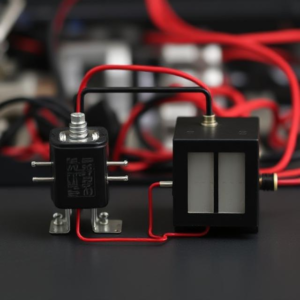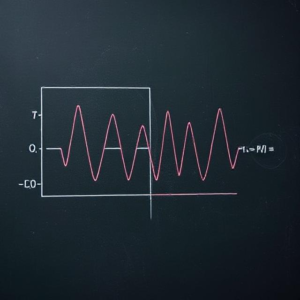What Are Electrical Waveforms?
In the world of electronics and electrical engineering, electrical waveforms are simply patterns of voltage or current that change over time. You can think of a waveform as the shape or curve that represents how an electrical signal (like voltage or current) behaves as it moves through a circuit.
Waveforms are visual representations of electrical signals, and they help engineers and scientists understand how electricity behaves in various systems. For example, the waveform of your home’s AC (alternating current) electricity looks like a smooth wave that repeats regularly.

Why Are Electrical Waveforms Important?
Waveforms are crucial for understanding and analyzing how electrical signals behave in different circuits. They can tell you a lot about:
- Voltage levels (how much electrical pressure is applied).
- Current flow (how much charge is moving).
- Frequency (how fast the signal repeats).
- Amplitude (how high or low the wave goes).
Engineers use waveforms to design everything from audio amplifiers to wireless communication systems.
Types of Electrical Waveforms
There are different types of waveforms that are commonly used in electronics. Here are the main ones:
a. Sine Wave
- The sine wave is one of the most basic and important waveforms in electrical engineering. It looks like a smooth, regular curve that rises and falls symmetrically.
- Properties:
- It has smooth transitions from positive to negative.
- Frequency refers to how fast the wave oscillates (measured in Hertz, Hz).
- The height of the wave is called the amplitude.
- Example: The electrical power supply in most homes uses a sine wave. When you plug in an appliance, it runs on AC power, which is supplied in the form of a sine wave.
b. Square Wave
- A square wave is a waveform that switches between two levels: high and low, in a very sharp manner, almost like a staircase pattern.
- Properties:
- The signal jumps between two levels (e.g., 0 and 5 volts) without any smooth transitions.
- It has a frequency like the sine wave, but it’s non-sinusoidal.
- Square waves are often used in digital circuits and clocks.
- Example: Digital devices like computers and microcontrollers use square waves to represent on (high) and off (low) signals (like binary 1s and 0s).
c. Triangle Wave
- A triangle wave looks like a series of straight-line ups and downs, creating a series of triangles.
- Properties:
- It rises and falls in a straight, linear manner (compared to the smooth curve of the sine wave).
- It has a very predictable, uniform pattern.
- Example: Triangle waves are often used in signal generation and audio synthesis, especially for creating sounds in music.
d. Sawtooth Wave
- A sawtooth wave looks like the teeth of a saw, with a sharp rise and a gradual fall (or vice versa).
- Properties:
- It goes up sharply, then drops back down slowly in a repeating pattern.
- There are two types: rising sawtooth wave (where the signal goes up quickly and drops slowly) and falling sawtooth wave (where the signal drops quickly and rises slowly).
- Example: Sawtooth waves are used in oscillators and synthesizers for generating certain kinds of sounds and signals.
Key Properties of Electrical Waveforms
To better understand waveforms, there are a few important characteristics or properties that every waveform has:
a. Amplitude
- Amplitude is the height of the waveform. It tells you how strong or intense the signal is.
- In a voltage waveform, amplitude refers to the highest and lowest voltage levels the signal reaches.
b. Frequency
- Frequency refers to how often the waveform repeats itself. It is measured in Hertz (Hz), which means cycles per second.
- For example, if a sine wave completes 50 full cycles in one second, it has a frequency of 50 Hz. Most power supplies use 50 Hz or 60 Hz depending on the region.
c. Period
- The period is the amount of time it takes for one full cycle of the waveform. It is the inverse of the frequency.
- If a signal has a frequency of 50 Hz, the period will be 1/50 seconds or 20 milliseconds.
d. Wavelength
- Wavelength is the distance between one peak of a wave and the next peak. It’s often used in radio and electromagnetic wave discussions.
e. Phase
- Phase refers to where the waveform starts in its cycle. Two waves with the same frequency and amplitude but shifted in time are said to be in different phases.
Applications of Electrical Waveforms
Electrical waveforms are used in many different areas. Some examples include:
a. Communication Systems:
- In radio or television broadcasts, electromagnetic waves carry information through the air. These waves can be modulated (i.e., adjusted) in amplitude or frequency to carry data, and the modulated waves are electrical waveforms.
b. Power Systems:
- The electrical power in your home is delivered as an AC sine wave. The shape of this waveform affects how electrical appliances work. For example, some sensitive equipment needs pure sine waves to function properly.
c. Audio Signals:
- Microphones and speakers use electrical waveforms to represent sounds. Audio signals are often in the form of sine waves, square waves, or triangle waves, depending on the application.
d. Signal Processing:
- Electrical waveforms are used in signal processing to modify, amplify, or filter signals. For example, audio filters might adjust a sine wave to remove unwanted noise or adjust frequencies.
e. Oscilloscopes:
- An oscilloscope is an instrument that visually displays waveforms. Engineers use oscilloscopes to check the quality and behavior of electrical signals in a circuit.
Conclusion
- Electrical waveforms are graphical representations of how electrical signals change over time.
- Common types of waveforms include sine waves, square waves, triangle waves, and sawtooth waves.
- Each waveform has important characteristics such as amplitude, frequency, period, and phase.
- Waveforms are crucial for understanding and analyzing signals in communication, audio systems, power systems, and more.











